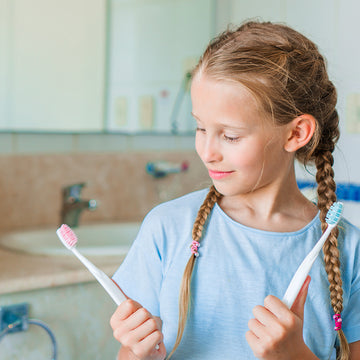
Common Mistakes Made When Brushing Your Teeth

It should be a pretty simple operation, just grab a pretty brush and start! But most people never learned the toothbrushing drill and make some common mistakes. These made not seem serious, after all it is just toothbrushing, but over time bad brushing can contribute to not only tooth decay but gum disease and recession as well.
How to Brush Your Teeth? Here Are Some Simple Rules and Guidelines
One of the biggest mistakes is choosing the wrong brush. And it can be pretty confusing when you hit the store aisles and see a gazillion brushes. No problem, it is actually easy:
- First, make sure you have a soft bristle brush–no one needs a hard brush, except for cleaning tile in your bathroom. Soft bristles are far, far safer on your gums and it is super important to have soft bristles that can bend and gently clean along the gum line. Hard bristles can both damage the tooth enamel as well as irritate the gums and encourage gum recession.
- Second, you should have a brush that fits your mouth. Some folks are big mouths (just talking size here) and others have small oral cavities. You know best, just get a brush that fits comfortably and can easily access your entire mouth.
- Third, if you are in the habit of using a lot of pressure or have a mouth full of hard-to-reach places, then you might consider a brush that has a bendable flex point.
- Four, don’t use old toothbrushes. When they get too worn down, the bristles won’t be able to clean as well and to get to those hard-to-reach places.
Another mistake is the overly vigorous brusher. It is a bad idea to go at your teeth like you are scrubbing a kitchen sink. It does NOT take pressure to dislodge plaque or to clean your teeth. Just dump the image of “scrubbing clean” and instead adopt the “spa experience” image and give your teeth and gums a massage! (One good learning tip is to hold your brush between your thumb and just one finger, this limits the pressure that you can apply)
On the subject of how to hold your toothbrush, there are a couple points to keep in mind. First, for the main surfaces of your teeth, a gentle up-and-down motion with the bristles straight on the surface works fine. BUT, one of the main goals of toothbrushing is to clean those hard to reach spots, like along the gum line and between the teeth. Here it is best to hold the bristles at a 45-degree angle to the gums.
Following up on this point, it is REALLY important to get those nooks and crannies… especially on the inner side of your teeth. These areas are often neglected. So, when brushing, pay special attention to the forgotten zones and pockets. Your teeth and gums will thank you for the extra effort! Lesson to learn: Clean all your teeth (inner and outer) not just the parts that you see.
How Long and How Often Should You Brush Your Teeth?
The first question is easy to answer, two minutes is the recommended length of time to brush and should give you adequate time to cover top-to-bottom and inside-out.
To best answer the second question, it is good to understand WHY you brush your teeth. The basic reason you brush your teeth is to disrupt the bacteria in your mouth. Part of that is accomplished by the removal of food particles (bacteria fuel) and part is accomplished by the action of brushing. Bacteria is resilient and will grow and grow, so you DON’T want to skip brushing–even if you haven’t eaten. Ideally, you would brush twice a day. Whether it is when you wake up and then when you go to sleep, get in the habit of twice-a-day.
Here are a couple other pointers, not really mistakes, as they might just be things that you don’t know or aren’t too familiar with:
Clean your tongue, for overall oral health, it is just as important to clean here as it is to brush your teeth. This area is often forgotten but is a BIG hangout for bacteria to grow. The tongue is moist, dark and pretty much always has some food on it–a bacterial paradise. So, give it a clean too, it only takes a few seconds. The soft rule also applies here. No need to scrape away, just some gentle back and forth with your tooth brush. Note, you may be really sensitive to a gag reflex at first, but you will get used to it in time.
Don’t brush your teeth right after eating. This can actually be harmful to your teeth and to your enamel, especially if you have been eating acidic foods. While eating, your saliva flow gets stimulated. Saliva not only helps to digest food, it also helps to keep your enamel strong and to maintain a proper pH level in your mouth. By allowing a bit of time after eating and before brushing, your saliva has a chance to do its job. Plus, brushing right after eating acidic foods can potentially damage your enamel, so just don’t do it.
Follow these simple rules, they really are simple and easy, and you can help keep your teeth strong, your gums healthy and your breath fresh for years to come.